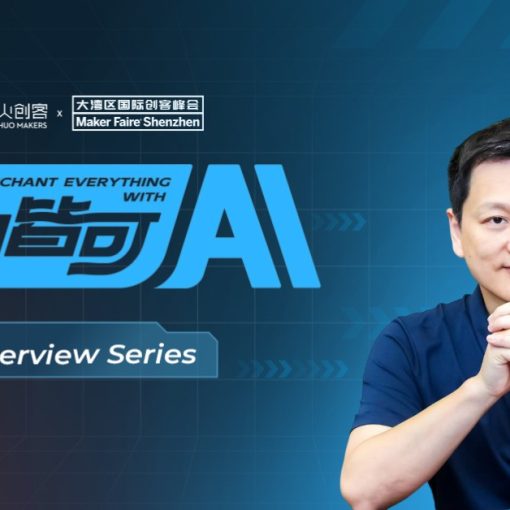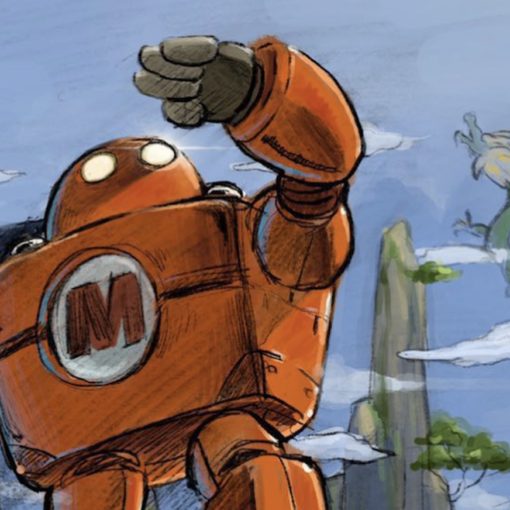Welcome to the Gen Z Makers — at Maker Faire Shenzhen 2025!
Here, we invited a group of makers to share their story and experiences in pushing technological boundaries — how they push their limits, overcome obstacles and even how to embrace failures.
Gen Z Makers — Crafting the Future with AI Tools
With AI as the weapon, these makers are rewriting what’s possible in the fields of AI hardware:
- Meet robotic companions brought to life through AI personality algorithms
- Develop the world’s first desktop-class bipedal robot powered by Raspberry Pi
- Imagine AI that interacts through living plants and wearable technology
They’re not just NPCs – they’re the superheroes of the AI revolution!
Desktop Robotics Dreamer – Liu Pengfei
Maker Faire Shenzhen Curator Ye Yu says:
“We invited Liu Pengfei as a guest not only because his solid technical expertise and a spirit of continuous innovation, but also because we’ve had the growing privilege together at MFSZ, witnessing each other’s development along the way.”
The Maker’s Journey:
Liu Pengfei completed his undergraduate studies at Harbin Institute of Technology and his master’s degree at Tsinghua University. After graduation, he worked at some leading companies like ZTE and Huawei, gaining strong technical expertise and industry insights. Fueled by the passion for robotics education for young people, he founded Luwu Dynamics in 2020, with a focus on the desktop robotics.
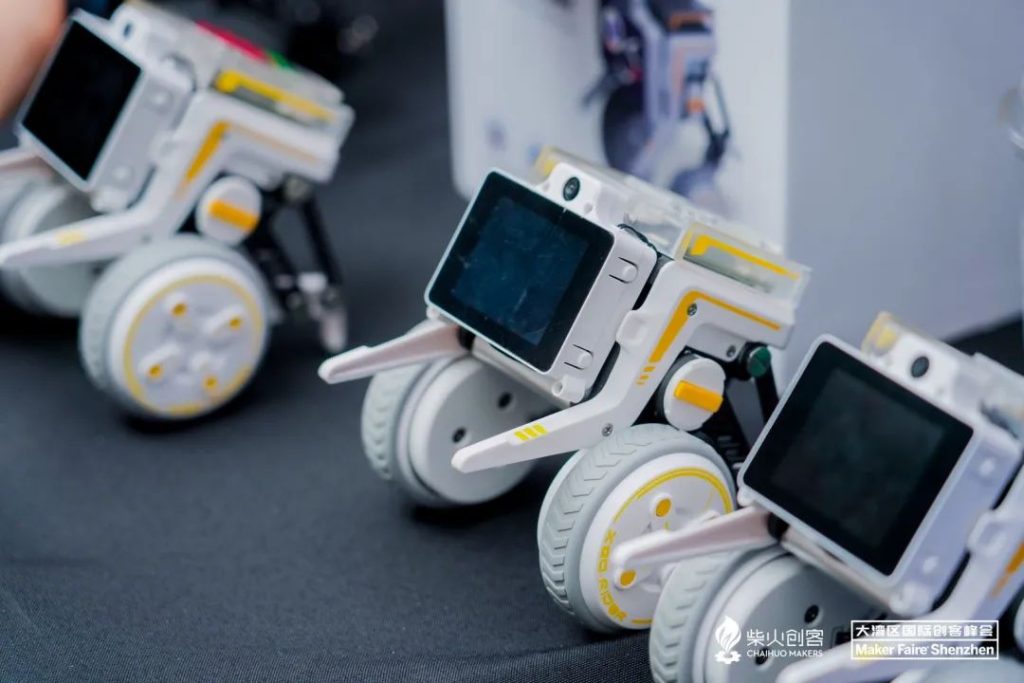
His entrepreneurial journey has been a continuous exploration of breaking boundaries, with each step taken boldly and decisively—driven by both imagination and execution:
- In 2021, the first-generation all-metal desktop robotic dog was born and made its mark in the global market.
- In 2023, the world’s first Raspberry Pi-powered desktop quadruped robotic dog with a robotic arm was unveiled to great acclaim.
- In 2024, he launched the world’s first Raspberry Pi-powered desktop bipedal robot, further pushing the limits of innovation.
These years, we’ve witnessed the growth of this dynamic AI hardware company, watching its products evolve through cloud-based large models for visual understanding, multimodal voice interaction, and open motion control interfaces.
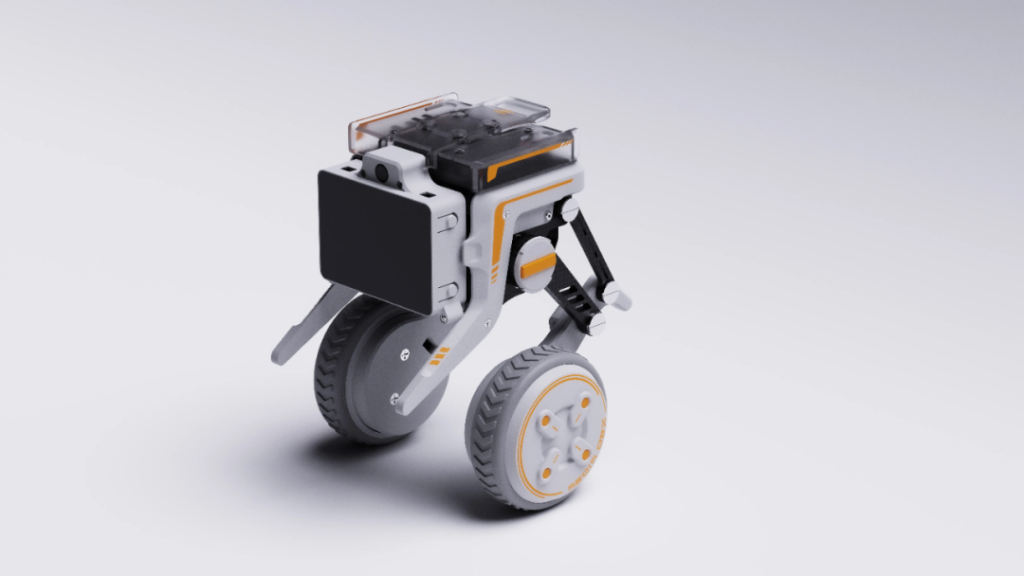
We are genuinely excited and confident that Liu Pengfei and his Luwu Dynamics will continue to surprise us with innovation.
Let’s step into the extraordinary world of this “Desktop Robotics Dreamer”!
Guests Inroduction
Liu Pengfei: Core Member of Chaihuo Maker Space| Founder of Luwu Dynamics
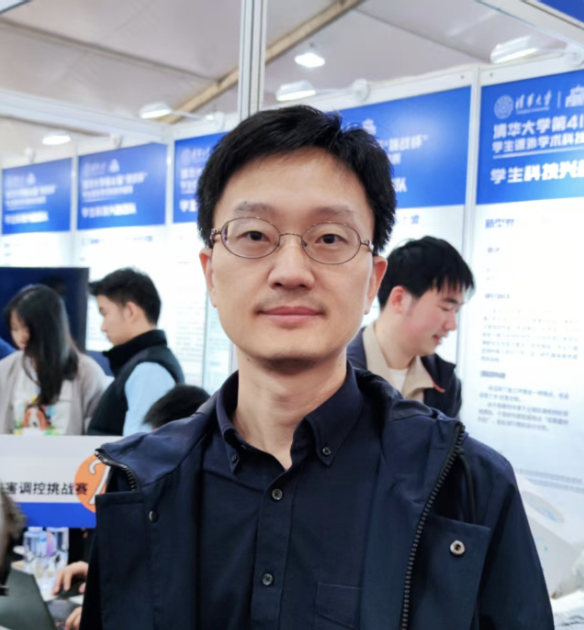
Q & A
Makey: “Pengfei, could you briefly introduce yourself?”
Liu Pengfei: “Hello everyone! I’m Liu Pengfei, founder and CEO of Luwu Dynamics. With the tag of Harbin Institute of Technology Robotics, I have been concentrated one mission: bringing robots out of the screen and into the physical world, making them tangible and collaborative for enthusiasts.
My colleagues often say I have the rigor of an engineer in relentlessly tackling technology, fueled by a maker’s passion to refine products. But for me, the ultimate goal is to bring embodied intelligent robotics to life and make them a reality.”
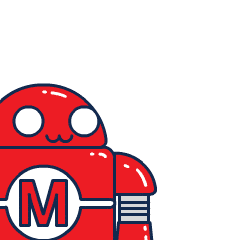
Makey: “Could you introduce your latest robot? What AI capabilities does it utilize? What are the key hardware/modules used in the project?”
Liu Pengfei: “Our latest iteration of the XGO series includes a diverse product matrix of bipedal, biorobotic, quadrupedal, and four-wheeled robots. These products are powered by the Raspberry Pi CM5 and Horizon X3 core modules, integrating three major AI capabilities:
- Cloud-based large model visual understanding
- Multimodal voice interaction
- Advanced motion control algorithms with a variety of interfaces
In terms of core hardware, the all-metal bus servos and FOC hub motors form the muscle system, complemented by a 9-axis IMU. Developers can customize the system through the open-source framework”

Makey: “With growing interest in robotics, have you known anyone become interested in AI or hardware specifically because of your project?”
Liu Pengfei: “Too much! The XGO series has been driven by the core value of educational accessibility. Thus, over 500 primary and secondary schools across China are using the XGO quadruped robot as an AI teaching tool currently.
And I think the most memorable story comes from a high school in Shenzhen, where students created a “stray animal feeding robot” using the XGO-Mini2. By training a cat and dog recognition model with our open visual API and integrating a robotic arm, they even won a prize at the provincial innovation competition.”

Makey: “If you had unlimited time, what kind of AI hardware project would you want to create?”
Liu Pengfei: “It would undoubtedly be a fully embodied AI platform. It can allow users to freely assemble forms such as quadruped, bipedal, or wheeled robots. Equipped with “electronic skin” flexible sensor arrays, it can sense temperature and humidity.
This wouldn’t be a simple companion product, but a versatile embodied intelligence platform adaptable to various settings such as homes, offices, and healthcare environments. The current XGO series is laying the foundation for this ultimate goal.”

Makey: “That sounds great!What do you think is the most exciting application scenario for AI hardware?”
Liu Pengfei: “The Bidirectional Evolution of the Educational Scene. The XGO series is validating a key concept: Robots are not just teaching tools; they are also learning companions that evolve alongside children. As students use AI tools to optimize robot behavior, the robots, in turn, are learning human interaction habits. This human-teaches-machine, machine-rewards-human feedback loop is the most fascinating aspect of embodied intelligence in education.”

Makey: “While we interact with AI, it’s also quietly adapting and learning human behavior.If AI were a person, what role would it play in your project?”
Liu Pengfei: “The most in-sync technical partner.” With the development of XGO, AI is neither the commanding “boss” nor the passive “tool.” For instance, when using reinforcement learning tools to fine-tune XGO’s gait algorithm, we set rewards and penalties for the model, and it autonomously explores new gait algorithms—something that traditional control algorithms could never achieve.”

Makey: “What problem do you think the integration of AI and hardware solves, or what new experiences does it bring?”
Liu Pengfei: “No matter how powerful AI software is, without a hardware platform, it remains a “castle in the air.” Traditional AI operates at the level of information processing, while hardware is the only interface for AI to engage with the physical world. The XGO series addresses two core issues:
It breaks the misconception of “AI = APP,” allowing everyday users to intuitively understand what “intelligence” is by adjusting robot joints and observing its bionic gaits and movements.
It alleviates the anxiety of pure software AI, with the XGO robot attracting users through multimodal interaction (visual + voice) and exceptional bionic movement capabilities.”

Makey: “What do you find more appealing about AI hardware compared to software?”
Liu Pengfei: “What attracts me more about AI hardware compared to software is its ability to offer intuitive interactive experiences and present real-world application scenarios.
The XGO – Rider bipedal AI robot, for example, integrates features like voice recognition, gesture interaction, and real-time image transmission, enabling omnidirectional movement and precise operations for teaching demonstrations, providing a tangible, interactive experience.
These hardware innovations break the screen boundaries and bring AI into everyday life in a more vivid and engaging way.”

Makey: “What is your perspective on the future of AI + hardware? What new opportunities do you think it will bring?”
Liu Pengfei: “I firmly believe that an embodied intelligent society is no longer science fiction. In the next 10 years, AI hardware will experience a breakthrough. There are two key trends I foresee:
Personalized Embodied Assistants: Just like everyone has a smartphone today, in the future, everyone will have their own robot tailored to specific scenarios—responsible for household services, health management, and even creative collaboration.
Educational Robot Iteration and Upgrades: Through AI-powered embodied hardware, children in remote areas will have access to cutting-edge robotics technology, cultivating engineering thinking for the future.”
We are inevitably heading towards a society of embodied intelligence. Though the journey will have challenges, Pengfei and his team have demonstrated the feasibility of bringing technology to life—transforming lab prototypes into globally distributed products.
We sincerely thank Pengfei for sharing his insights. Hope this interview will inspire each of you! If you have any other perspectives on AI hardware, feel free to make a comment to share your ideas!

If you want to showcase your innovative ideas and the impact they have on industry innovation, meet like-minded makers, and explore the specific applications of cutting-edge technologies in various industries at one of the largest maker innovation events in the world, we invite you to sign up by scanning the QR code below or clicking here. We look forward to seeing you there and sharing your journey of continuous innovation!
Call for Makers
Scan to Register

Registration Period: May 21th, 2025 – September 30th, 2025
Aiming to promote business connections between professional visitors and exhibitors, Maker Faire Shenzhen 2025 has initiated a new registration channel for professional audiences, which can ensure more efficient exhibition output and provide a good exhibition experience.
Channnel for professional audiences



Over the past 12 years, the development trajectory of Maker Faire Shenzhen can be seen as a microcosm of the development of maker culture in China.
- 2012: “Gathering Small Wisdom, Journeying through the Great Future” – This was the first Mini Maker Faire in China, with less than 1000 attendees, and was more like a gathering within a small circle. But we saw the infinite possibilities emerging from the maker community.

- 2013: The slogan was absent, and the maker community was still small. – In the OCT Creative Park, there were cross-disciplinary exchanges among different creative communities, silently laying the foundation for cultural output.

- 2014: “Innovate with China” – the event was upgraded to the Featured level for the first time, with a significant increase in scale compared to previous years, and the beginning of professional independent forums. This year, makers began to enter the public’s view.

- 2015: “Everyone is a Maker, what are you waiting for?” – This year’s Shenzhen International Maker Week became one of the largest Maker Faires in the world. This year, the concept of “maker” was elevated to a national level, and the trend of “mass innovation, mass entrepreneurship” swept across the country.

- 2016: “My World, My Creation” – As the sub-venue of the National Innovation and Entrepreneurship Week, the event was held for the first time in the commercial center area, experiencing unpredictable weather from typhoons to scorching heat. Many makers succeeded in your entrepreneurial endeavors this year, but it seemed like there were even more failures. The hype around entrepreneurship shifted towards rationality.

- 2017: “Makers, Go Pro” – The event took place at the university campus for the first time, focusing on Maker Pros and providing a platform for diverse innovators and makers to showcase themselves, presenting more possibilities for the growth path of makers to the entire community.

- 2018: “Co-making in the City” – The main venue of Shenzhen International Maker Week, where individuals and groups with shared visions and values gathered to showcase stories, projects, and explorations of collaboration among different communities and people.

- 2019: ” To the Heart of Community, To the Cluster of Industry” – The event was upgraded to the Maker Faire Shenzhen, attempting to attract professional audiences and focusing on pragmatic aspects such as solving the needs of industrial upgrading and co-developin. It aims to build a platform for innovation and industry dialogue and collaboration.

- 2023: “Where Are The Makers?”– Starting from our own mission and values, we aim to explore the future direction of makers and theapossibilities for commercialization. Though this question does not have a definitive answer, we do hope that through this event, we can communicate and share with every one of you, finding more ideas and directions together.

- 2024: “Everything is AI” – This year, we brought together over 120 exhibitors from around the world, attracting nearly 1,500 professional attendees from nearly 20 countries and over 20 provinces across China. The exhibition showcased a wide range of AI application projects and hosted 10 AI hardware-themed satellite events, alongside various workshops.


